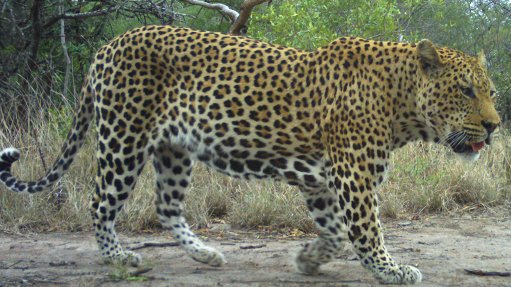
A Leopard photographed by one of the research cameras
Photo by: Gonçalo Curveira-Santos
Research undertaken in South Africa’s KwaZulu-Natal province by an international team of wildlife ecologists has confirmed the value of privately-owned nature reserves and game farms in conserving free-ranging carnivorous animals but also highlighted the fundamental role of formal (national and provincial) parks. The team further included traditional communal lands in their study.
The lead author of the research paper was PhD student Gonçalo Curveira-Santos of the Centre for Ecology, Evolution and Environmental Changes (abbreviated to cE3c) at Lisbon University in Portugal. The other members of the team were University of Venda Department of Zoology Professor Lourens Swanepoel, Chris Sutherland of the Department of Environmental Conservation at the University of Massachusetts Amherst in the US and Margarida Santos-Reis also from the cE3c at Lisbon University.
The research area was in northern KwaZulu-Natal and embraced the 108-year-old uMkhuze provincial game reserve, the Mun-ya-wana private game reserve, commercial game ranches and traditional communal areas, including villages. These were classified as four different protection layers.
No less than 294 trail cameras were used to create a ‘camera trap network’ with each camera deployed for an average of 75 days. Activated by motion, the cameras captured 7 224 images of 13 species of free-ranging carnivores, all the way from small mongooses through spotted hyenas to leopards. The researchers analysed the data for multi-species site occupancy (these occupancy rates acted as proxies for the abundance of the species concerned).
“Our results support the notion that the private reserves or game ranches play a complementary role to formal protected areas, but that it’s also important to recognise they do not play the same role, and may not be a conservation panacea,” highlighted Curveira-Santos. “For governments, it’s attractive to move conservation to the private sector, but for us to assess the conservation benefits of doing so, we need some benchmarks, and protected areas under long-term formal protection are important references to a ‘natural state’.”
The study established that the number and identity of the species of carnivores were similar between the provincial park, the private reserve and the game ranches. However, the number and variety of these animals were “markedly lower” in the traditional communal lands.
This data showed that free-ranging carnivores can thrive on private lands. However, while the number and identity of these species was similar between the private and formal conservation areas, they were not identical. The occupancy rates for most of the studied free-ranging carnivores were highest in the formal provincial park. “[C]learly more research is needed to understand what factors may be hindering species recovery to the levels observed in the formal protected area, and importantly, what the ecological consequences of such patterns are,” pointed out Sutherland.
“Our point is that the formal old protected areas may play a key role that cannot be replicated easily,” stressed Curveira-Santos. “In general terms our work adds to the call for a more holistic perspective of wildlife for effective conservation planning. In the meantime, ensuring the long-term maintenance of formal protected areas is probably our safest bet.”